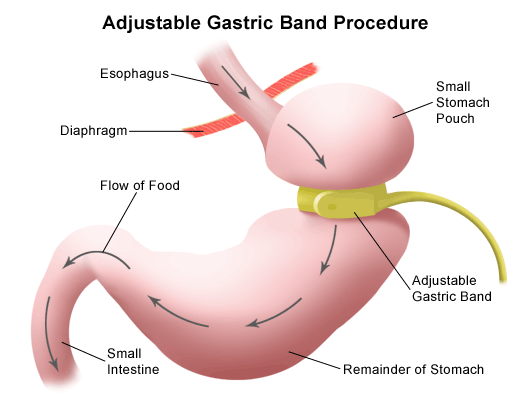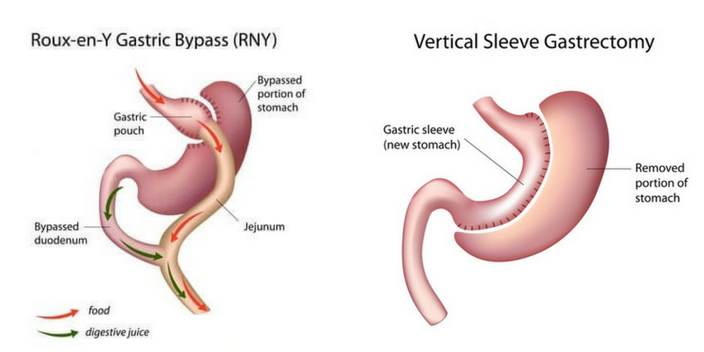Medical Devices
Obesity And Weight Loss Surgery | Bariatric

The field of medicine has advanced by leaps and bounds in the last century. Today, there are vaccines and cures for all kinds of medical conditions – be it an illness or a lifestyle problem. We hear of all kinds of transplants from hair to heart and all kind of surgeries to enhance one’s looks. Such has been the progress of medical science that people can also undergo obesity and weight loss surgery that helps them look healthier, fitter and slimmer. What’s more, patients have the option to choose from a wide range of weight-loss surgeries. Let’s understand what it means to undergo a weight loss surgery along with the old and new weight loss surgery options that people can choose.
Definition of obesity
Obesity is defined as having too much body fat, which develops when the intake of fats for the use of energy exceeds its expenditure It is typically measured in terms of body mass index or BMI whereby one’s weight (measured in kilograms) is divided by the square of their height (measured in metres). Individuals with a BMI of 30 or more are generally considered as obese, whereas those with a BMI that equals more than 25 are deemed as overweight. Such individuals are often susceptible to several significant health risks for a wide variety of chronic illnesses, such as diabetes, heart disorders, cancer, and other such critical health issues. Obesity was initially considered a health issue only in high-income and first-world countries for the longest time. However, it has been on the rise dramatically, in middle and low-income countries, specifically those in urban settings.

What is Weight Loss Surgery?
Bariatric surgery, also known as weight loss surgery, is an operation that helps patients loses weight by making several changes to their digestive system. These surgeries can make the patient’s stomach smaller, thus enabling them to eat and drink smaller portions of food. The person undergoing surgery feels full soon despite consuming smaller portions. Weight loss surgeries also involve changing one’s small intestine, i.e. the organ that absorbs nutrients and calories from food. These surgeries are typically designed for obese people who are either struggling to lose weight or those who have gained weight despite losing it through different methods such as exercise, diet, medication, etc. Bariatric surgery is also seen as an option for people suffering from serious health issues like Type 2 diabetes or obesity-related or sleep apnea.

Types of Weight Loss Surgeries
Essentially, there are two types of weight-loss surgeries that are commonly known. They are
-
The Restrictive Surgery
The first type of weight loss surgery is known as restrictive surgery. This surgery works by shrinking/reducing/restricting the stomach size and slowing down digestion. Typically, the average stomach can hold approximately 3 pints of food. However, once one has undergone a restrictive surgery, the stomach may hold only about an ounce of food at once. It can later stretch to hold approximately 2 to 3 ounces of food. As the size of the stomach is reduced, patients tend to eat less, which in turn helps them reduce more weight. -
The Mal-absorptive Surgery
The second type of weight loss surgery is known as the mal-absorptive surgery or the intestinal bypass surgery. This surgery changes how the patient consumes food. The surgeon gives the patient a smaller stomach and also bypasses part of the patient’s digestive tract.
New Weight Loss Surgery Options
People who wish to undergo weight loss surgery have several options and can choose one that best suits weight-loss goals. They can discuss the same with their surgeon before going for the surgery. The following are some new weight loss surgery options that patients can explore.
-
The Adjustable Gastric Banding Surgery
A type of restrictive surgery, adjustable gastric banding is a procedure in which the surgeon squeezes the stomach into two segments by using an inflatable band. The first is a smaller upper pouch, and the second is a larger lower section. These two sections are connected by a small channel that slows down the upper pouch as it empties. Most people who undergo the adjustable gastric banding procedure can only eat half to one cup of food, after which they end up feeling either too full or sick. Also, they are advised to consume soft foods and chew their food properly. This procedure is generally considered one of the safest as compared to most other new weight loss surgery options. The surgery is also less invasive, resulting in a smaller scar, while the patient recovers faster. What’s more, patients can have the band adjusted, loosened or tightened. They can also undergo surgery and have the band removed if they so desire.

-
Sleeve Gastrectomy
Another type of restrictive surgery, sleeve gastrectomy is an operation in which the surgeon removes approximately 75% of the patient’s stomach, leaving only a narrow tube. The narrow tube, also known as a sleeve, is connected to the intestines. This type of weight loss surgery is recommended for very obese people. The surgery is also more straightforward, giving patients a low-risk way of losing weight. Patients who need it can undergo a second surgery / staged surgery like a gastric bypass once their health improves, typically after a year. Since the intestines remain unaffected, this procedure does not affect how the body absorbs food. As such, the patient is not likely to have a nutritional shortage. -
Roux-En-Y Gastric Bypass Surgery
Another new weight loss surgery option, the Roux-en-Y Gastric bypass surgery combines restrictive as well as mal-absorptive approaches. Here, the surgeon divides the patient’s stomach into two sections by sealing the upper section from the lower section. The upper section is then directly connected to the small intestine’s lower section. Through this procedure, the surgeon essentially creates a shortcut for the food by bypassing a part of the small intestine and the stomach. This shortcut in the digestive tract results in the body absorbing fewer calories. Patients who undergo this procedure find that weight loss occurs swiftly and dramatically, with almost 50% of the weight loss occurring within the first six months. The weight loss can, in fact, continue for up to 2 more years, post-surgery. The rapid weight loss, in turn, helps resolve health conditions related to obesity such as high blood pressure, diabetes, high cholesterol, sleep apnea, arthritis, heartburn and so on.

About Meril MirusTM Endoscopic Linear Cutter:
Meril’s MIRUSTM Endoscopic Linear cutter is a stapling device that assists in obesity and weight loss surgery. MIRUSTM endoscopic linear cutter and TRIO reloads are available in different lengths with Three Varied Staple Heights to accommodate varied tissue thicknesses.
A time-tested brand, Meril’s MIRUSTM guarantees optimal compression and less tissue trauma. This reliable, flexible and easy to use product can be used in various types of weight loss surgeries in India and abroad. The product is easy to handle and it also facilitates better tissue manipulation, leaving a smooth and precise transection.
Final note: As is apparent, there are several new weight loss surgery options available to patients. However, before choosing an option, the patient must consult the doctor about the option that best suits them. They must discuss the pros and cons of each type of weight loss surgery before undergoing it. While the surgery helps one control and manage weight, the patients must also follow the proper post-surgery guidelines suggested by the doctor.





